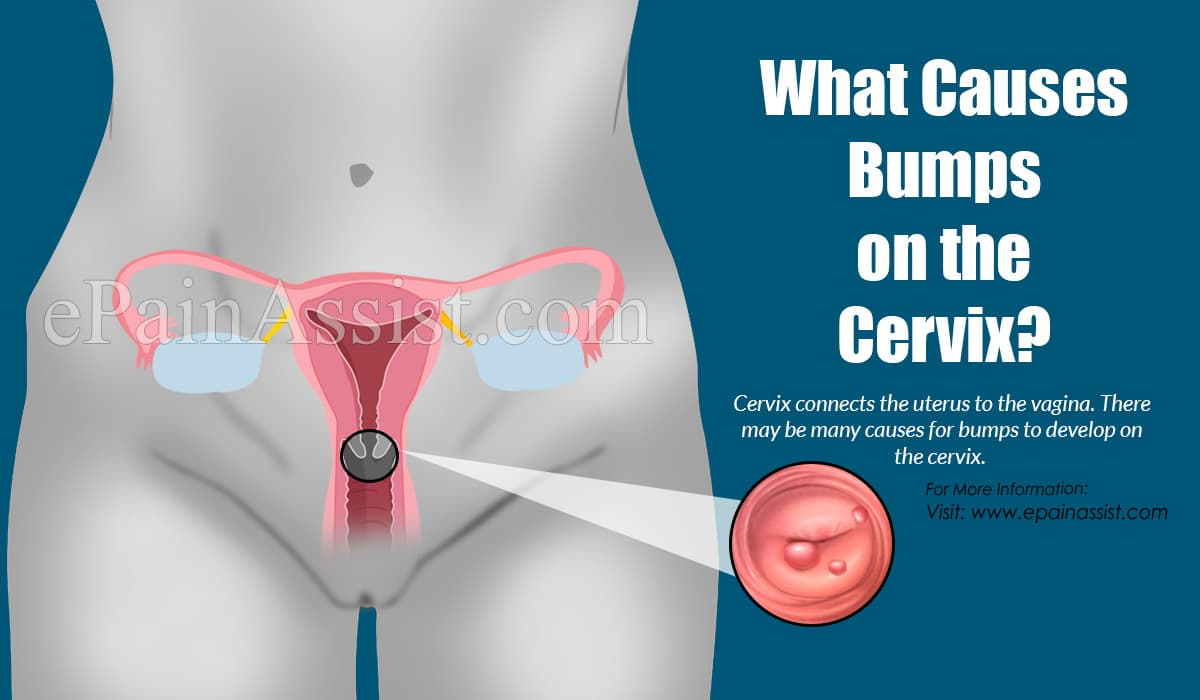Bumps on the Cervix
It is not uncommon for physicians to come across various abnormalities when examining the cervix. Many of these abnormalities are cystic in appearance but there are some which are not cytologic in nature. Some of these abnormalities like nabothian cysts and cervical polyps are extremely benign and harmless. However, there are some abnormalities which are associated with cervical inflammation and postcoital bleeding that require further evaluation and management[1].
In some cases, the physicians find it extremely hard to examine the cervix due to poor visualization. This this impairs an accurate diagnosis of the cervical abnormality and to devise a treatment plan. This happens usually in females who are postmenopausal or have a retroverted uterus. Some females who have a history of a vaginal surgery, a pelvic mass or uterine enlargement also have a cervix that is difficult to visualize[1].
Bump on the cervix is one such condition in which there are lesions noted on the cervix. These lesions may be polyps or cysts but in some cases they might indicate presence of cancer. A bump on the cervix may be noted on routine pelvic examination or tests conducted for some other abnormalities around the cervical region. This article highlights some of the causes of bumps on the cervix and what can be done about it[2].

What Causes Bumps on the Cervix?
Cervix connects the uterus to the vagina. There may be many causes for bumps to develop on the cervix. These causes include.
Cervical Polyps. This is a benign growth which develops on the cervix. The size and shape of these growths are quite variable. There is no known cause for these polyps but high estrogen levels, cervical inflammation, and blockages of blood vessels are believed to be some of the reasons behind it[2].
It is extremely rare for cervical polyps to become malignant with only 1 in 1000 people being identified as having them. Removal of cervical polyps is quite an easy procedure and does carry with it an untoward complications [2].
Nabothian Cysts. This is yet another potential reason for bump on the cervix. This cyst is seen only in pregnant females. The primary cause for nabothian cyst is the presence of excess skin that clogs the lining of the cervix. This condition is asymptomatic and the female only comes to know during a routine evaluation during pregnancy. In some cases these cysts may rupture and release blood[2].
Cervical Fibroids. This is yet another potential cause for bumps on the cervix. Cervical Fibroids are benign growths that generally develop in the muscle tissue of the uterus, although at times they can also develop on the cervix causing a bump[2].
The size of these bumps is quite variable where some may remain small and others may grow so large that they can visible from the naked eye in the form swelling around the abdomen and may result in significant weight gain[2].
Cervical Cancer. There are cases where a bump on the cervix has indicated presence of cervical cancer. In the initial stages, the bump is completely asymptomatic. While malignant cervical tumors affect the lining of the cervix, in majority of the cases it is the squamous cells that get affected the most by cervical cancer. This is according to American Cancer Society[2].
What Can be Done About the Bumps on the Cervix?
Now that we have a fair idea about what causes bumps on the cervix, it is also important to know what can be done about it. Majority of the cases of benign growths do not require any treatment and go away on their own. However, if these growths start causing problems and affect the daily life of the individual then treatment might be required[2].
In some cases, the cysts may grow large enough that the abdomen may start looking out of shape and become concerning for the female. In such cases surgical removal of the cysts is recommended. Some of the treatment options to treat bumps on cervix include[2].
Surgery. There are various surgical procedures that can be done to remove polyps and include.
Polypectomy. In this procedure, the polyp from the cervix ix removed manually by using forceps. It is a same day procedure and can be done at an outpatient clinic.
Electrocautery Ablation. This method uses electric current to remove cysts from the cervix.
Myomectomy. This procedure is done to remove the fibroids on the cervix. In this procedure, a small nick is made in the abdomen and the fibroids are identified and removed[2].
Medication. There are also certain medications that can be used to treat certain forms of bumps on the cervix. Gonadotropin-releasing hormone agonist is one such class of medication that is used to treat fibroids in the cervix that become symptomatic. They work by inhibiting the production of estrogen and progesterone in the body thereby shrinking the fibroids[2].
Some bumps on the cervix may cause pain which can be treated by over the counter pain medications like Tylenol and ibuprofen. If the bump on the cervix is found to be malignant then the individual will have to undergo radiation therapy followed by chemotherapy. The patient may also have to undergo surgical procedure to remove the cervix and uterus to prevent the cancer from spreading to other parts of the body[2].
Also Read:
- Causes of Heat Bumps & Home Remedies to Get Rid of it
- Red Bumps on Baby: Causes, Symptoms, Treatment, Prognosis, Prevention
- Are Bumps on Lower Lip Contagious?|Causes, Treatment, Home Remedies for Bumps on Lower Lip
- 15 Useful Home Remedies To Get Rid Of Red Bumps On Legs
- 12 Common Causes of Red Bumps on Legs & Treatments to Get Rid of Them
- Bumps on the Skin after Scratching: Causes, Symptoms, Treatment, Prognosis, Prevention
- 10 Amazing Home Remedies To Get Rid Of Bumps On Forehead
